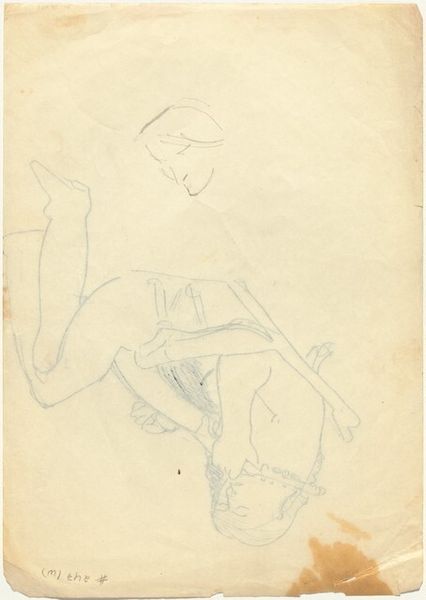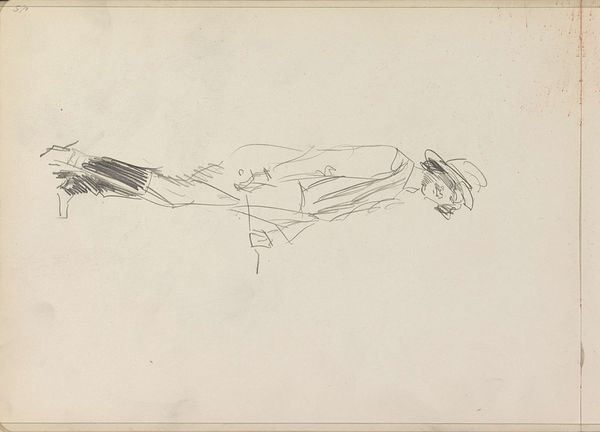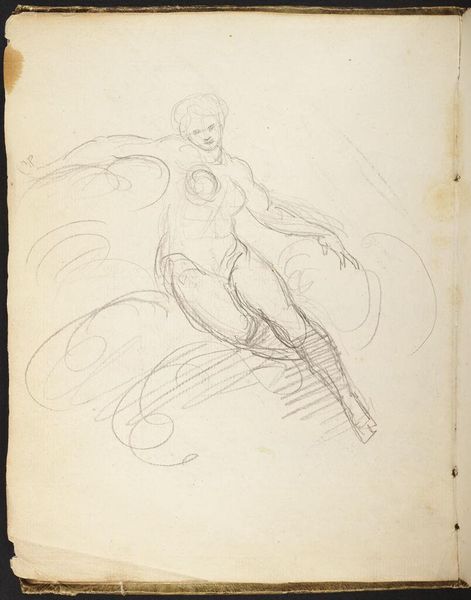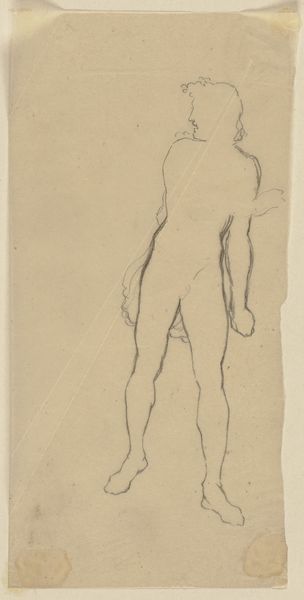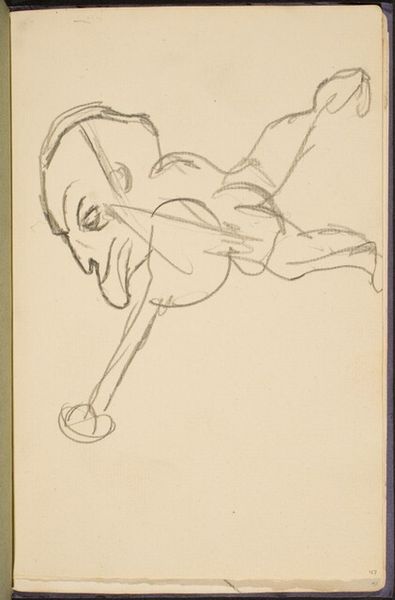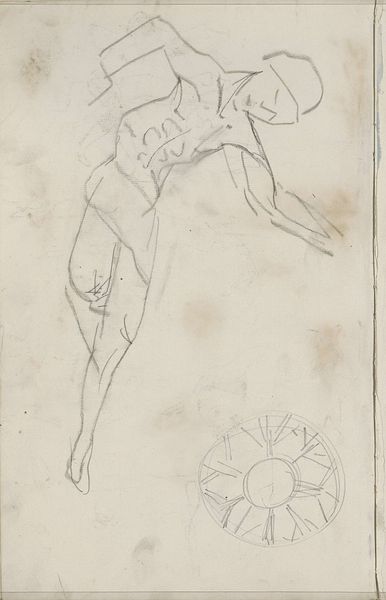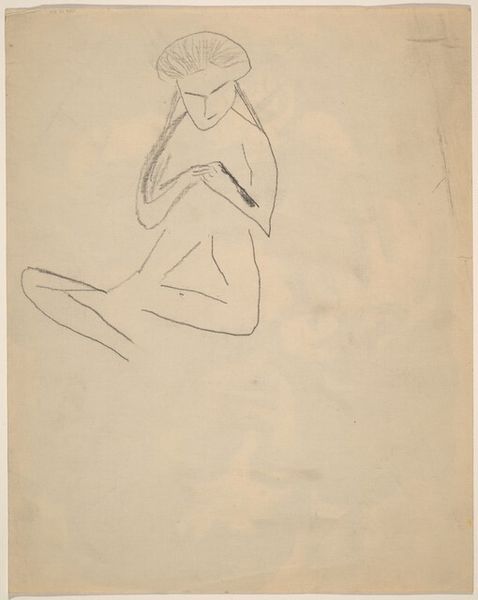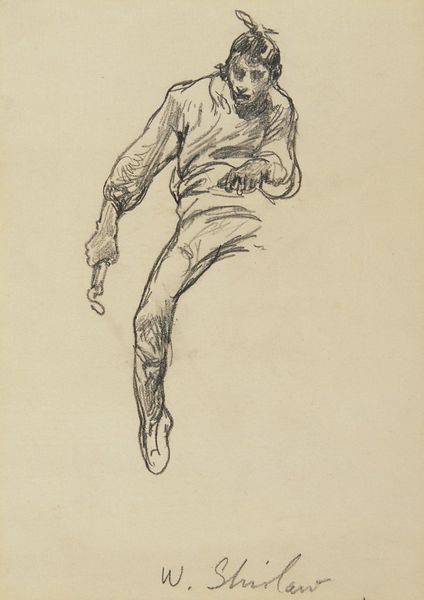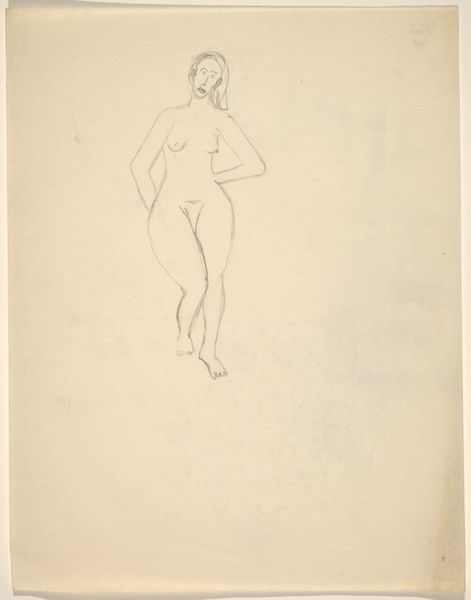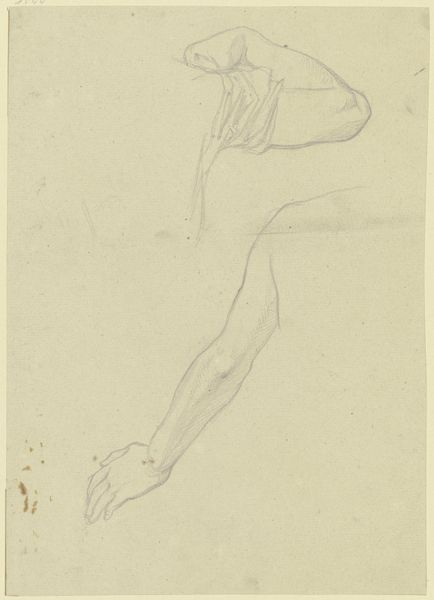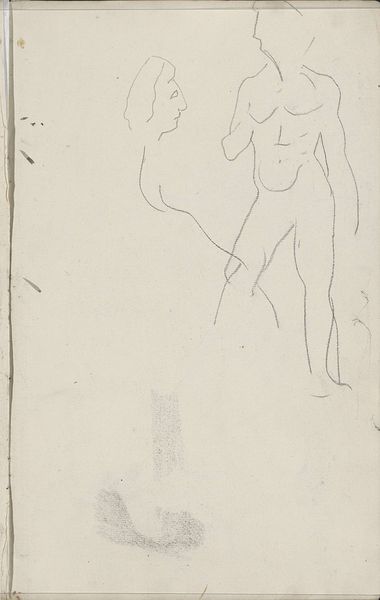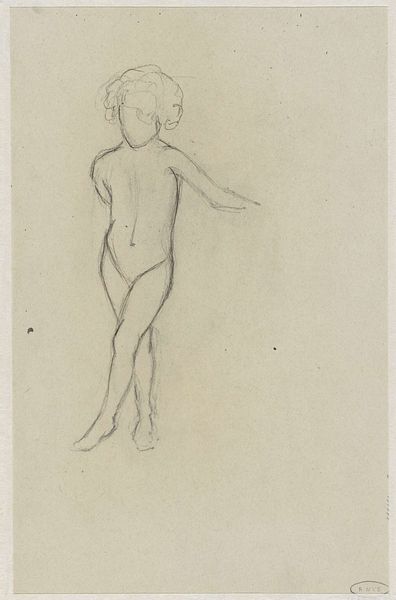
drawing, pencil
#
portrait
#
drawing
#
pencil sketch
#
figuration
#
pencil
#
academic-art
#
realism
Copyright: Public Domain: Artvee
Curator: Here we have Józef Simmler’s "Szkic postaci Amora," or "Sketch of Cupid's Figure," completed around 1863. It's a pencil drawing that offers an intriguing glimpse into the artist's process. What’s your initial impression? Editor: My eye is immediately drawn to the delicate pencil strokes and the dynamic pose. There’s a real sense of movement, though the overall impression is rather understated, almost hesitant. The muted tones of the drawing underscore this, conveying a subtle sense of emotional introspection. Curator: Simmler, of course, was working within a historical context where the academic tradition emphasized rigorous anatomical study and figure drawing. The male nude became both a site of aesthetic accomplishment, and one loaded with complex meanings. Editor: Absolutely. The rendering of the musculature, while restrained, showcases a commitment to naturalism, to careful observation of the human form. This also brings to mind the artist's struggle with realism—especially the human figure during this period. We are witnessing both control, and the suggestion of sensuality through the soft blending of the shading. Curator: Right, and consider Cupid as a subject. Traditionally, he's mischievous, an almost playful figure of romantic love. But here, there’s a somber quality that complicates our interpretation of it. I find it interesting to explore how Simmler’s interpretation shifts and interacts with that cultural imagery, given Poland's socio-political situation in the 19th century. Was it even appropriate to depict something as lighthearted as romantic love? Editor: A fair point, the composition is interesting here, as we don't see any of the iconic paraphernalia, arrows, or bow... He appears as any regular man; not at all triumphant. Stripping these attributes seems to strip away what is recognizable, in favour of human feeling. What really captivates me is the interplay between the precision of his formal training and this understated emotive depth. Curator: Indeed, examining "Szkic postaci Amora" reveals layers of formal consideration interacting with societal questions concerning figure art at the time. It brings into focus how academic practices evolve, adapting under particular historic conditions and pressures. Editor: It's interesting how a medium as simple as pencil on paper can evoke such intricate aesthetic consideration—not to mention that ever present element of melancholy and restrained passion.
Comments
No comments
Be the first to comment and join the conversation on the ultimate creative platform.
